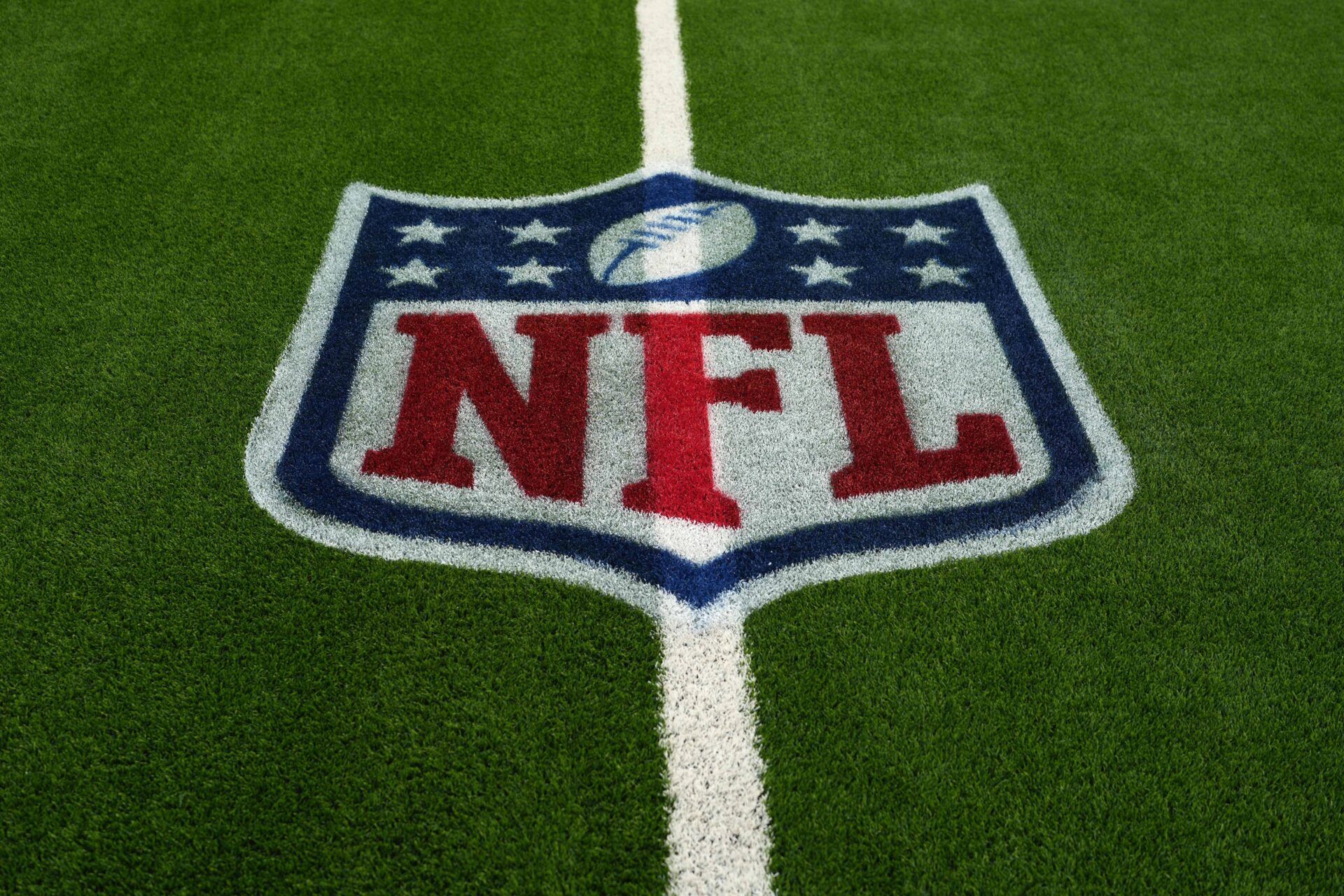BREAKING NEWS: One NFL Team Officially Announces a Major Change to Their Home Jersey Color — Here’s What Fans and Analysts Need to Know
In a groundbreaking announcement that has captured the attention of football fans and analysts alike, one National Football League (NFL) team has officially revealed they are changing their home jersey color for the upcoming season.
This move, which is sure to spark widespread discussion, represents more than just a simple aesthetic shift.
It is a bold reimagining of a team’s identity, a move designed to elevate their brand, excite their fan base, and keep pace with the ever-evolving landscape of professional sports.
While it may seem like a small detail to some, the color of a team’s home jersey is often far more significant than it might appear at first glance.
Jerseys are a central part of a team’s visual identity and are one of the first things fans associate with their team.
Over the decades, NFL teams have carefully honed their image through their uniform choices, with many franchises creating an indelible connection between their colors and their legacy.
In the digital age, where visual branding plays an increasingly important role, the decision to change a home jersey color is not made lightly.
Fans, both loyal and new, will be watching closely to see how this change impacts the team’s overall image and whether it leads to more success on the field and in the market.
A Deep Dive into the NFL’s Tradition of Iconic Jerseys

The history of the NFL is steeped in iconic jerseys and legendary uniforms. Since the league’s inception in 1920, teams have used their uniforms to tell the story of their identity and their culture. Some of the most famous NFL uniforms are etched into the minds of fans.
The green and gold of the Green Bay Packers, the blue and silver of the Dallas Cowboys, and the red and gold of the San Francisco 49ers all evoke powerful images of past victories, playoff glory, and championship runs. For many fans, these jerseys are sacred symbols of their team’s place in the sport’s history.
But jerseys are not only about tradition. Over time, the NFL has seen a shift in how teams approach their uniforms.
What was once a matter of necessity—simple, functional gear for players to wear—has now become an essential part of a team’s brand.
The rise of social media and the growing influence of visual content has placed more importance on a team’s look than ever before. Every detail of a team’s uniform, from the helmet design to the color of the socks, is now analyzed, dissected, and debated.
The NFL’s tradition of iconic jerseys has created a fascinating dynamic between teams, their fan bases, and the public.
For instance, the Chicago Bears’ classic navy blue jersey has remained unchanged for decades, evoking nostalgia for older fans and continuing to serve as a reminder of the team’s storied history.
Similarly, the Pittsburgh Steelers’ yellow and black “Terrible Towels” have become an indelible part of the Steelers’ identity, transcending the uniform itself.
Yet, not all teams stick strictly to tradition. Over the years, several NFL franchises have experimented with new jersey designs and alternate color schemes in an effort to stay relevant and appeal to a younger, more dynamic audience.
These changes reflect a broader trend in the NFL to modernize both on the field and off it, and the recent announcement of a home jersey color change is simply the latest chapter in this ongoing evolution.
The Significance of the Jersey Color Change

When a team makes the decision to change its home jersey color, it is typically a reflection of a broader strategic shift within the organization.
While it may initially seem like a cosmetic alteration, the ramifications of such a change can extend far beyond the color of the fabric.
For starters, the move is often tied to a team’s desire to rebrand itself, attract a wider audience, and align more closely with current trends in sports marketing.
This shift can also be a way to rejuvenate a team’s image, particularly if the franchise is in need of a boost after a period of stagnation or failure.
A new jersey color can symbolize a fresh start, signaling to fans and analysts alike that the organization is serious about turning things around.
For teams that have struggled in recent seasons, this change can serve as a statement of intent, suggesting that the franchise is ready to compete at the highest level.
Beyond the marketing and branding advantages, a home jersey color change can have psychological implications for both players and fans.
Psychologically, color is known to have an impact on how people perceive themselves and others. In the world of sports, this is especially important.
Teams often select certain colors for their jerseys to evoke specific emotions and create a distinct identity.
For instance, many teams opt for bold colors like red or black to inspire feelings of strength and aggression. On the other hand, teams that choose lighter or more subdued tones might be trying to convey a sense of calm and control.
For players, wearing a new home jersey can also provide a psychological boost. Many athletes thrive on new experiences and challenges, and a change in uniform color can serve as a catalyst for greater focus and determination.
For fans, a fresh jersey design or color scheme can reignite their passion for the team, especially if they have a strong emotional connection to the franchise.
The sight of a new uniform on the field often serves as a symbol of progress, optimism, and change.
The Marketing Power Behind a Jersey Color Change
In the digital era, the power of social media and digital marketing cannot be overstated. With billions of people worldwide consuming content on platforms like Instagram, Twitter, and YouTube, NFL teams are increasingly relying on their visual identities to make a statement.
Uniforms and jerseys have become integral to a team’s social media presence, providing fans with another way to engage with their favorite franchises.
The decision to change a home jersey color is, in many ways, a savvy marketing move.

When a team unveils a new jersey design or color scheme, it creates an immediate conversation in the media and online communities.
Fans are quick to share their opinions, post images, and discuss their thoughts on social media. This creates a viral marketing effect, with the team’s new jersey becoming a topic of widespread discussion.
Additionally, teams often capitalize on jersey changes by launching limited-edition merchandise, selling the new uniforms to eager fans.
This strategy helps the team generate additional revenue while building excitement around the new look.
For fans, the opportunity to own a piece of the new uniform represents a tangible connection to their team, further strengthening their loyalty and support.
Beyond the traditional retail angle, NFL teams also recognize the value of appealing to younger, fashion-forward fans.
The influence of streetwear culture, influencers, and celebrity endorsements has made it essential for teams to consider how their uniforms fit into the broader fashion landscape. As such, jersey color changes are often designed to appeal to a broader demographic, including the younger, trend-conscious audience that might not have previously been as engaged with the sport.
How Does This Change Affect the Team’s Fan Base?
The fan base is often the heart and soul of any sports team, and their reaction to a jersey change is crucial in determining its success.
For some fans, a home jersey color change can feel like a betrayal of tradition, especially if the team has a long-standing history with a specific color scheme.
These fans might see the alteration as an attempt to erase the past or undermine the team’s identity.
However, for other fans, a jersey color change is a welcome departure from the norm. It signals that the team is willing to take risks and innovate, which can be exciting for those who are eager for a fresh perspective.
Additionally, younger fans, who are often more open to change and more likely to embrace new trends, may appreciate the move as a sign that the franchise is evolving to keep up with the times.
Regardless of the initial reaction, it’s clear that a home jersey color change can have a profound effect on the fan base.
For some, it represents a moment of pride and unity as they rally around a new look. For others, it may take time to accept the change, but eventually, the excitement around a new uniform can bring the fan base closer together.
The Impact on the Team’s On-Field Performance
While jersey color changes may seem like a purely off-field decision, there’s a growing body of research suggesting that uniforms can influence a team’s performance.
Athletes are known to have strong psychological reactions to their uniforms, and a change in color can affect how they approach the game.
Some studies have shown that players feel more aggressive, confident, and ready to compete when wearing certain colors, particularly bold and powerful tones like red or black.
Additionally, a new uniform design may instill a sense of pride and motivation in players, leading to improved performance on the field.
It’s important to note that this effect is not always universal—some players may feel more comfortable in traditional uniforms—but the psychological power of a new color scheme cannot be overlooked.
What’s Next for the NFL’s Changing Uniform Landscape?
As the NFL continues to grow both domestically and internationally, jersey color changes and other uniform alterations will likely become more common.
Teams are constantly looking for ways to stay ahead of the competition, both on the field and in the marketplace. The jersey color change announced by this particular team is just one example of how the NFL is adapting to a rapidly changing world.
As teams across the league experiment with new designs, colors, and marketing strategies, one thing is clear: the world of NFL uniforms is evolving.
Whether these changes result in improved performance on the field or simply serve as a tool for attracting new fans and increasing merchandise sales, they will undoubtedly have a lasting impact on the NFL’s visual identity.
For the team in question, the change to their home jersey color is just the beginning.
Fans will be eagerly watching to see how the new uniform is received, how it affects the team’s brand, and whether it leads to a more successful season both on and off the field.
The decision to change a home jersey color may seem like a small shift, but it represents a significant moment in a team’s journey.
Whether viewed through the lens of marketing, fan engagement, or performance psychology, this change is emblematic of the broader trends sweeping through professional sports.
As NFL teams continue to innovate and adapt to the modern landscape, we can expect more teams to take similar steps in the coming years.
For now, fans of the team in question can rest assured that their new home jersey color represents a fresh start—one that is sure to energize the franchise, create excitement in the stands, and spark conversations across social media platforms.
The NFL world is watching, and this change may just be the beginning of an exciting new chapter for the team and its supporters.
News
BREAKING: Dallas in DISARRAY. The Mavericks have just made a stunning, franchise-altering move, firing GM Nico Harrison just days after the NBA Finals ended. What happens to Luka now?
BREAKING: Dallas in DISARRAY. The Mavericks have just made a stunning, franchise-altering move, firing GM Nico Harrison just days after…
SHOCK HALFTIME SWAP: Brett Favre Demands NFL Replace Bad Bunny With This “True Patriot” for Halftime Show, And It’s Sparking All-Out War.
SHOCK HALFTIME SWAP: Brett Favre Demands NFL Replace Bad Bunny With This “True Patriot” for Halftime Show, And It’s Sparking…
WNBA star Sophie Cunningham is forced to issue a heartbreaking apology after a shocking up-skirt video, captured during her caddying for Caitlin Clark, LEAKS from the LPGA’s official account. The details are unbelievable.
WNBA star Sophie Cunningham is forced to issue a heartbreaking apology after a shocking up-skirt video, captured during her caddying…
NFL Fans Demand Jets Player’s Immediate Release Following Controversial “Business Decision” During Thursday Night Football Against the Patriots
NFL Fans Demand Jets Player’s Immediate Release Following Controversial “Business Decision” During Thursday Night Football Against the Patriots In the…
Unbelievable World Series Stat Shocks Fans and Demonstrates Shohei Ohtani’s Unmatched Impact on Baseball
Unbelievable World Series Stat Shocks Fans and Demonstrates Shohei Ohtani’s Unmatched Impact on Baseball The 2024 World Series has delivered…
The Giants just made a move so shocking, the rest of MLB is scrambling. Forget what you knew about their offseason—Tatsuya Imai is here, and you won’t believe the footage.
The Giants just made a move so shocking, the rest of MLB is scrambling. Forget what you knew about their…
End of content
No more pages to load












